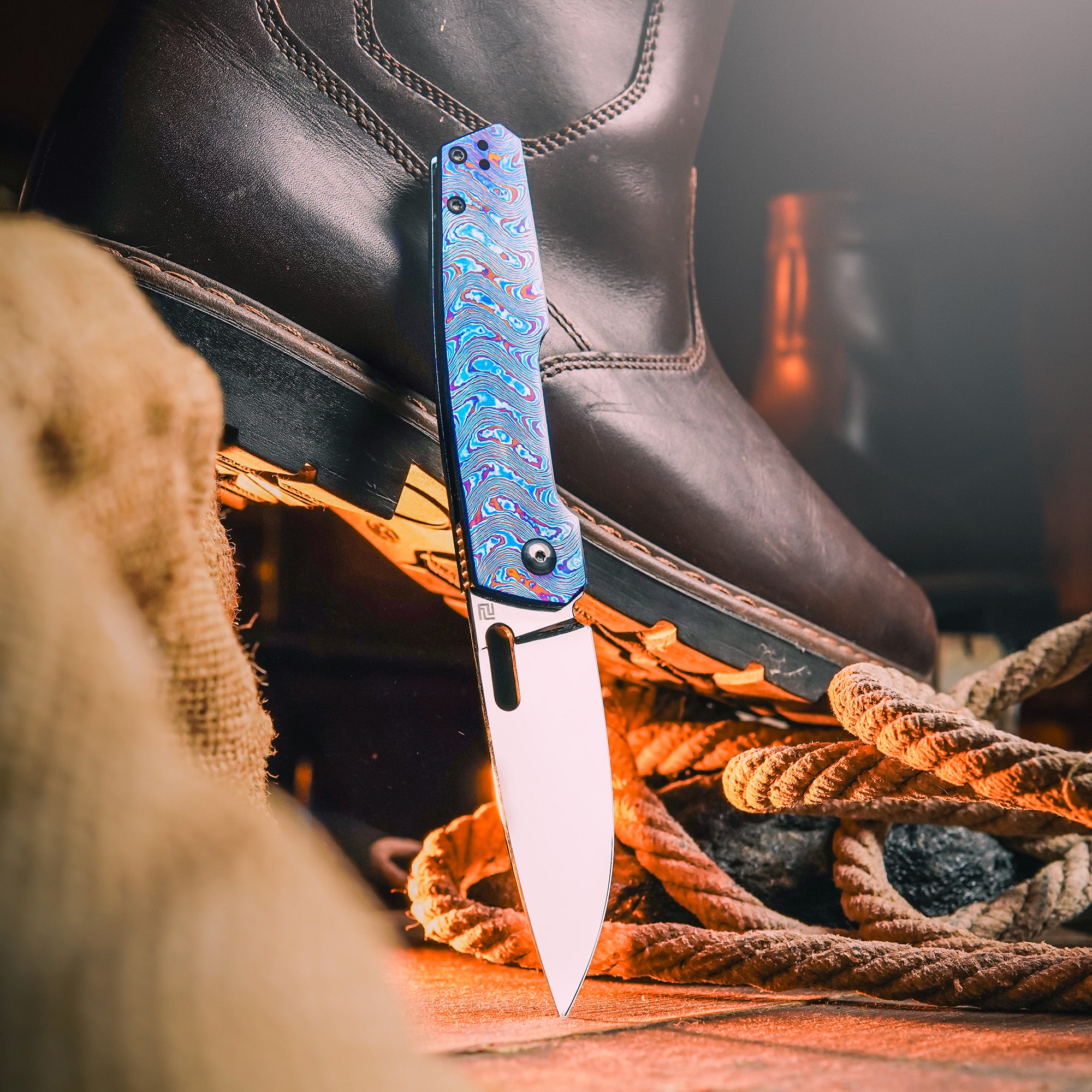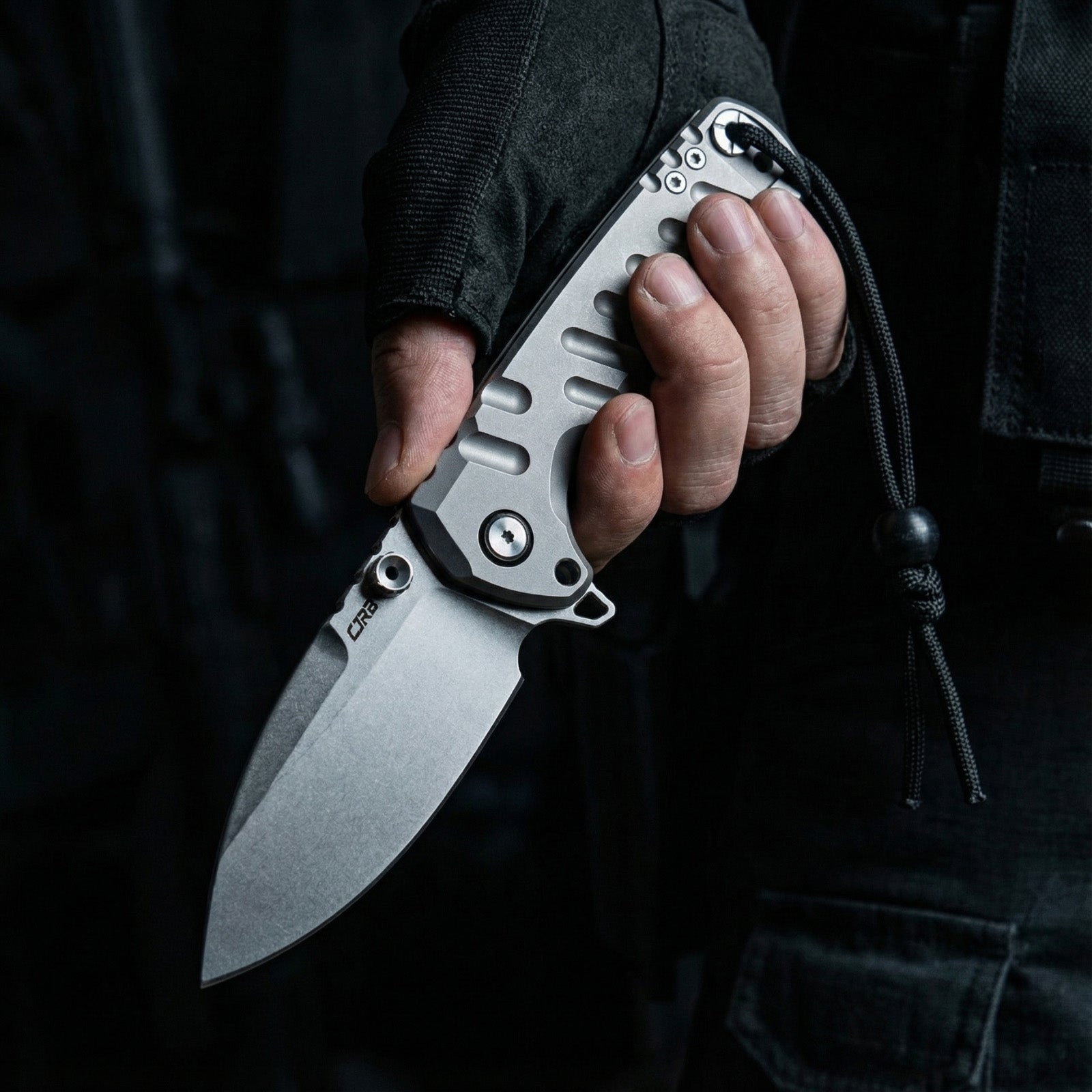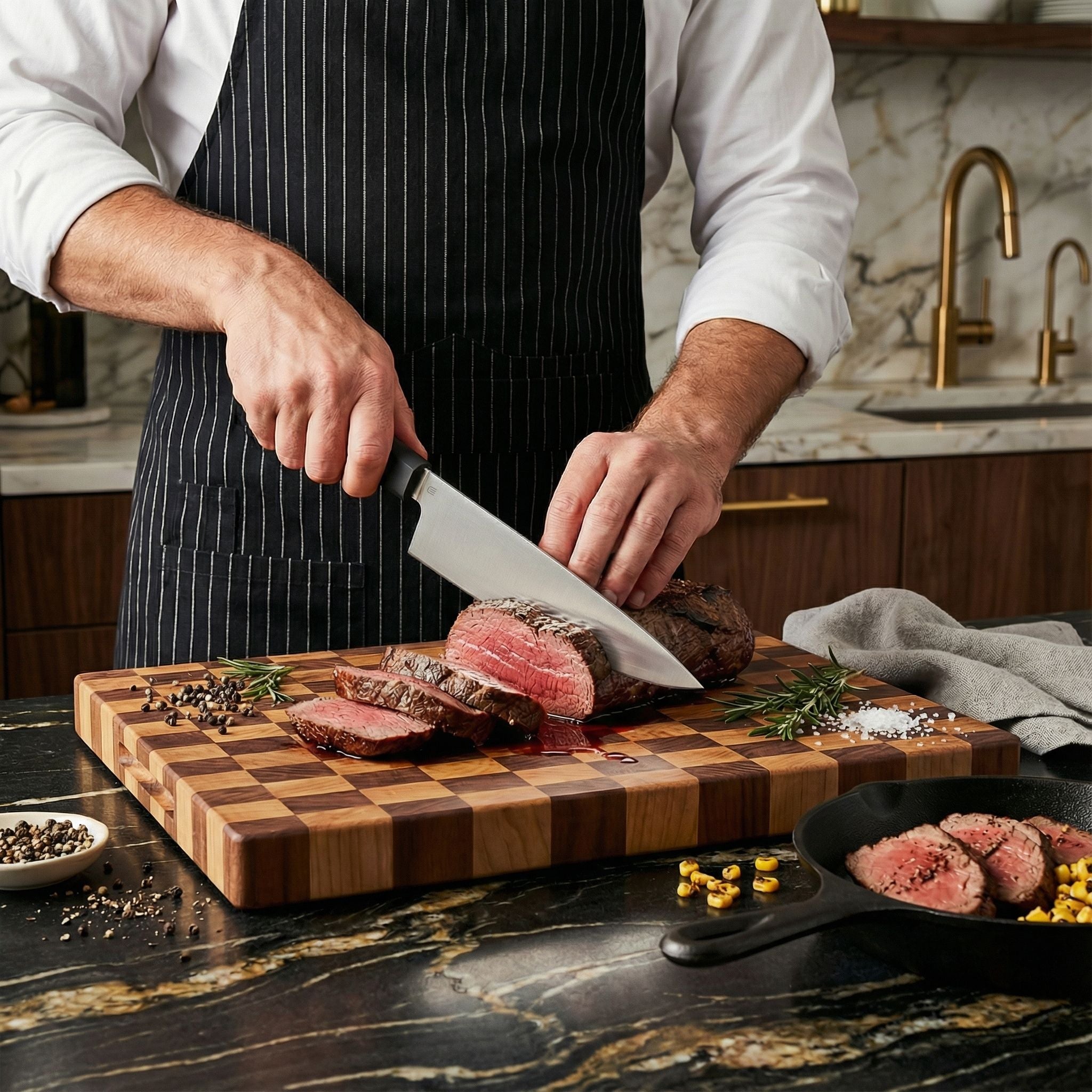Preparation for any emergency is key when venturing into the great outdoors. Nature is quite unpredictable, and certain tools can be real lifesavers in most survival situations. Of these vital tools, a fixed blade knife stands out. Unlike folding knives, with moving parts that can malfunction, fixed blades assure users of unparalleled durability and reliability. In the following blog post, we'll discuss the benefits of blade knives in an emergency kit, and how to select one to meet your needs, and so on. Let's move on to find out!
Advantages of Fixed Blade Knives in Emergency Kits
Tough and Durable
One big plus with fixed-blade knives is that they are inherently tougher. They are made from solid, robust materials like high-carbon or stainless steel. Thus, they will not let people down when handling harsh conditions. They are less likely to break or bend under pressure compared to folding knives. Therefore, fixed-bladed knives are ideal for any survival situation requiring a lot of strength.
Dependable Design(No Moving Parts)
Fixed blade knives are simpler in construction and have no moving parts, which means they are less prone to mechanical failure. That's the last thing you want: your knife failing on you at the worst time in a life-or-death situation. Fixed blades are so sturdy that they are guaranteed to function in any circumstance.
Multi-Purpose Tool in Survival Tasks
Another great reason to include a fixed blade knife in your emergency kit is its versatility. These knives can handle jobs ranging from simple tasks, like cutting rope and preparing food, to complex tasks such as building shelters and starting fires. Their strong build enables them to carry out both delicate and demanding jobs during outdoor emergencies.

Key Features to Look for in a Fixed Blade Survival Knife
Consider the following aspects when choosing the best fixed blade knife for your emergency kit:
Blade Material and Construction
Different materials used in the blade will make all the difference in the performance. High-carbon steel blades retain their edge well and sharpen very easily, but they might rust without proper care. Stainless steel blades are more resistant to corrosion but may require a little extra effort at sharpening. Understanding strengths and weaknesses will help you choose the blade material that fits your best needs.
Tang Type (Full Tang vs. Partial Tang)
Tang refers to the part of the blade that extends into the handle. A full tang knife has a blade that runs the entire length of the handle, providing superior balance and strength. Partial tang knives, while often lighter and easier to manufacture, may not be as sturdy, especially under stress. Generally speaking, a full tang knife is recommended for survival scenarios.
Handle Design and Grip
The handle should be comfortable and secure to hold, especially in adverse conditions. Find handles made from materials that allow for a good grip, even when wet. Ergonomic designs that fit well in your hand reduce fatigue with extended use and improve control during critical tasks.
| Handle Material | Description | Grip Quality |
| Rubber | Excellent grip and shock absorption | High |
| G10 | Durable fiberglass laminate, lightweight and strong | High |
| Micarta | Layers of linen/canvas with resin; sturdy and textured | High |
| Kraton | Soft yet durable polymer; secure grip | High |
| Wood | Traditional look; good grip if treated properly | Moderate (requires care) |
Blade Length and Shape
The length and shape will also determine which tasks it will be better suited for. Most survival purposes are satisfactorily met with a blade ranging from 4 to 7 inches, as it optimally strikes a balance between maneuverability and cutting power. For the shape, two popular designs include the drop point and spear point blades, thanks to their versatility and effectiveness throughout wide applications.
Sheath Quality and Attachment Options
A durable sheath is essential for safely carrying your knife. It needs to protect the blade and offer options for attaching it to your gear, whether that is a belt, backpack, or other equipment. Look for sheaths boasting strong materials resisting wear and tear, with secure knife retention to avoid accidents.
Critical Survival Tasks with Fixed Blade Knives
As we said before, the nature is unpredictable when you are outside. Knowing what survival tasks a fixed-blade knife can do for you is quite essential.
Shelter Building
One of your highest priorities in an emergency is to constructing a shelter. A fixed blade knife will enable you to cut branches, collect foliage, and construct a framework that protects you from the weather. You can process wood with strength and efficiency to build a makeshift shelter for safety and comfort.
Fire Preparation
Fire is the essence of warmth, cooking, and signaling for help. A fixed blade knife will help with preparing kindling by stripping off the bark or by cutting small branches. It will also help make fire-starting tools, such as shavings or sparks, to start a good fire.
Food Procurement and Preparation
A good sharp fixed blade knife is indispensable in procuring food, whether for fishing, hunting, or foraging. It assists in dressing game, filleting fish, and chopping fruits and vegetables. Safe and efficient preparation of food is important in survival to keep the energy level up.
First Aid Applications
Injuries can happen in emergency situations. A fixed blade knife can serve very well in first-aid applications, from simply cutting bandages to removing splinters or other debris from under the skin. While it should never take the place of professional medical care, having a trustworthy tool at hand can make the difference between managing a wound effectively or facing complications.
Signaling for Help
In dire situations, signaling for help could be your lifeline. The fixed blade knife can be utilized to make sure that signs are left, such as carving symbols into trees or creating reflective surfaces to attract attention. Your knife can also be put to work in a wide range of crafting devices to enhance the volume of sound or light production; these will increase your chances of being rescued.

Complementary Tools in Emergency Kits
While a fixed blade knife is incredibly versatile and can handle many tasks in outdoor emergencies, it should never be relied upon as your sole tool. Complement your knife with other survival gear, such as multi-tools, fire starters, and first aid kits, to create a well-rounded system that enhances your overall preparedness. A well-rounded emergency kit should include:
- Fixed Blade Knife: For food preparation, cutting, and building shelters.
- First Aid Supplies: To treat injuries and provide basic medical care.
- Fire Starter: To help spark the fire as soon as possible with matches, lighters, or flint.
- Water Purification Tools: Use tablets or filters to purify water to make it drinkable.
- Emergency Blanket: It is lightweight and compact in size and used to keep the body warm.
- Multi-Tool: Smaller in size and offers functionality.
How to Train and Practice with Fixed Blade Knives
Familiarize Your Knife
Having a fixed blade knife is just half the fight; the other half is good mastery. Regularly practicing with your knife will refine your skills and give you confidence in its use. In emergency situations, knowing the knife's handling characteristics, balance, and weight distribution can be quite helpful.
Practice Basic Skills
Practice first with simple tasks like cutting rope, cordage, or fabric until one gets used to how the knife handles in his hand and how it cuts. Gradually progress up to food preparation by first practicing chopping vegetables or filleting fish. These activities will help you develop your precision and control over the knife and get used to what the knife is capable of doing in practical situations.
Engage in Scenario-Based Training
Practice training in real scenarios that mimic potential emergencies, such as building shelters, and performing first aid with your knife. These practical exercises will allow you to take immediate action when real challenges arise, reinforcing your knowledge and boosting your confidence.
Focus on Satefy
Wear protection on the hands or eyes to minimize the chances of injury whenever practicing. Find a safe place to practice your sessions- look for a more open, yet controlled area that does not have hazards such as rocks, power lines, or any other potential danger.
Seek Guidance When Necessary
Never be afraid to ask for help if you are not sure of the techniques or safety precautions. Consulting a professional trainer or experienced friends can definitely bring good insights and tips to your level of skill. These experts will refine your methods, deal with concerns, and ensure you practice safely and effectively.
Equip Yourself for Survival with Fixed Blade Knives!
Fixed-blade knives are vital tools for any outdoor emergency kit with their solidity, reliability, and versatility. It should be remembered that being responsible means preparation, training, and practice with your knife. Not only can your outdoor experience be enhanced, but safety during emergency situations will also be improved. Take your time to prepare for this, and go on your trips with confidence- you're ready for anything that might come your way from nature!










Leave a comment
All comments are moderated before being published.
This site is protected by hCaptcha and the hCaptcha Privacy Policy and Terms of Service apply.